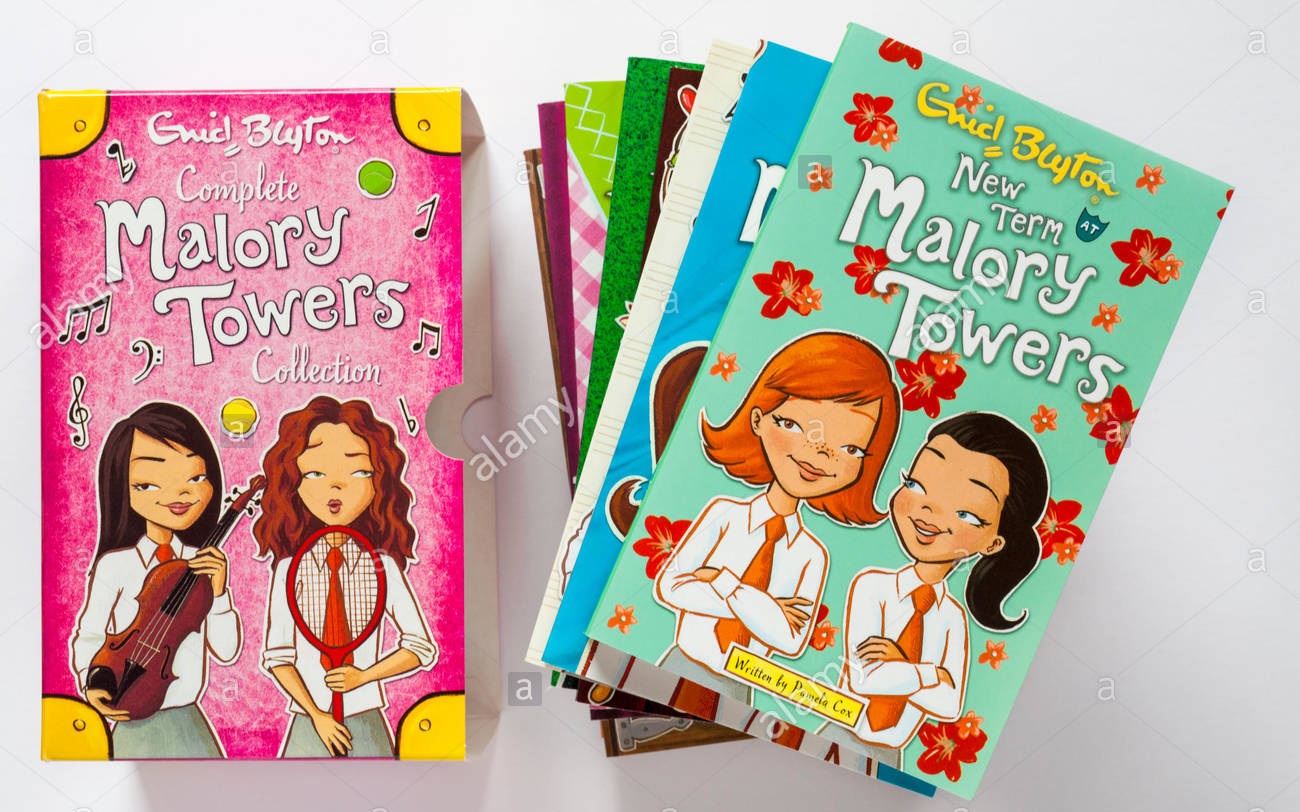Old school, new pupils: modernising Enid Blyton’s Malory Towers
A black character appears in one of four new stories designed to renew the appeal of Blyton’s boarding school for 21st-century readers. The girls of Malory Towers will be welcoming a new pupil later this month. Homesick, proud and lonely, Marietta is also the first black character to join Enid Blyton’s famous boarding school by […]

A black character appears in one of four new stories designed to renew the appeal of Blyton’s boarding school for 21st-century readers.
The girls of Malory Towers will be welcoming a new pupil later this month. Homesick, proud and lonely, Marietta is also the first black character to join Enid Blyton’s famous boarding school by the sea, which is enjoying an unlikely renaissance.
First dreamed up in 1946, a television adaptation of the school series is in development, and a theatrical musical that calls it “nostalgic, naughty and perfect for now … the original ‘Girl Power’ story” will tour England from July. But Marietta is the star of a new Malory Towers story from Patrice Lawrence, one of four commissioned by Blyton’s publisher Hachette, which will be released later this month.
Lawrence, who grew up in an Italian-Trinidadian family in mid-Sussex, was clear right away that she wanted to introduce a little diversity to Blyton’s blindingly white line-up.
“It was the thought that with this relaunch any young woman could really imagine the possibility of being there,” Lawrence says, “not just by doing the ethnic jump we’ve done most of our lives, that you have to pretend you’re white, but to actually see yourself there. It felt really important – just a lovely thing to do.”
When Marietta arrives at school with her father in New Class at Malory Towers, Lawrence writes that her “skin was still much darker than his, more like Momma’s”, her face framed by “rows of neat plaits … just touching her shoulders”. We learn that she grew up in the circus, where her mother was a boxer; we see her unsure of where she fits in among her confident peers the brash Alicia, kind Sally, brave Darrell, shy Mary Lou and spiteful Gwendoline.
All four of the new stories are set in the same 1940s era as Blyton’s originals, but Lawrence says there’s no question of any anachronism. “I’ve met a lot of women, particularly of Nigerian heritage, who spent time in boarding schools in England in the 1950s and 1960s,” Lawrence explains. “So I know they were definitely there – this is not political correctness.”
According to Alex Antscherl, Blyton editorial director at Hachette, the publisher wanted “authors we felt could bring a different perspective”, but they also wanted to ensure the new stories fit alongside the rest of the canon.
“Obviously there were girls who boarded from all round the Commonwealth, but you’re not aware of them in Enid Blyton stories.” Antscherl says. “It’s the same world and time and I do feel [these new stories] could have happened in 1943 – I don’t feel they have injected a jarring note of modernism.”
Narinder Dhami’s story stars an Indian girl called Sunita Sharma, while Rebecca Westcott Smith looks at the class divide with a cousin of the famously spoilt Gwendoline Mary. Lucy Mangan’s story follows student librarian Evelyn.
While Malory Towers is still a big seller, Anthscherl continues, the new stories are part of a project to examine how to “bring the conversation up to date” for Blyton’s most popular series. Names have been changed in the Faraway Tree stories, with Fanny becoming Frannie and the disciplinarian headmistress Dame Slap becoming Dame Snap. Dated and racist language was also removed from Famous Five books in 2010, though the publisher reverted to the original text six years later.
Lawrence, who says she was a Blyton fan as a child, admits she’s conflicted about the author and the racist stereotypes in the Noddy books, as well as throwaway sexist comments in the Famous Five. She hadn’t read Malory Towers before Hachette approached her about writing a follow-up, confessing she was “a bit suspicious of the boarding school ones as a child. I suppose it’s like reverse class snobbism. I felt they weren’t worlds I could indulge myself in as much as I could the other adventures.” But she was pleasantly surprised by the series’ female role models. “It’s really strong on female friendships, on creating supportive communities for each other. These are very individual and quirky and flawed young women. Even reading it as an adult the characters felt really real.”
According to Barbara Stoney’s biography, Blyton began writing Malory Towers at the suggestion of her publisher, following the success of her series The Naughtiest Girl in the School. The author based them on memories from her own schooldays and those of her daughters, “the games of lacrosse, hockey and tennis, the little spites and deceits of school life, the loyalty and generosities of friendship, and the never-ending impact of one character on another.”
Antscherl hopes Blyton would have embraced the new stories. “She was very much about going with what readers wanted, so I hope she would have welcomed them.”
As for Lawrence, she suggests Blyton would have relished the idea of flawed young women who are looking for a sense of belonging arriving at Malory Towers “as a place where any young woman can find themselves, from any background.”
“I don’t suppose I can imagine Blyton calling herself a feminist,” Lawrence says, “but I think the books have a really strong feminist undertow. And for me as a feminist it was good to use that positively.”
Source: TheGuardian.com
